The role of Technology in Today’s World and in the Future
Technology is an essential part of our lives today and few can imagine living without. We achieved a lot with the help of technology, for example we have the possibility to travel, keep in touch with friends on the other side of the earth and cure many illnesses. It means more freedom and choices for people but at the same time we have to consider the social imbalance, weapons of mass destruction and natural resource depletion. Jane Godall asks for a reason: “We are the most intelligent species walking on earth, how it comes we destroy on what we depend?” What has achieved so far is irrevocable, but we can still determine where it goes in the future.
One of the most important things everybody has to deal with is to overcome the short-termism, which prevails in governments, companies and individuals. Additionally we know, that decisions one individual takes are not necessarily good for the society as a whole. This doesn’t make it easier.
I think it is important to bear in mind the mutual goal: to keep the planet with mankind and all its beautiful animals and plants alive. This implies to make technology as positive as possible for humanity and the environment in the long run. The technology we create now creates the future and it should be for the people and make things easier and not more complicated. So what kind of society will we be?
Technology shapes the future and it can help to make it compatible with nature. It can help us to develop clean energy, transport possibilities with less emissions and low-energy houses to save resources. Technology is not only about technology itself or more efficiency and discovering new methods and processes; we have to add the component of art which is about to make wise choices for the future of technology. We should not develop technology because of itself, but to develop it, because it adds value to society and simplifies human life. For this, it needs to be discussed with experts from many fields and we have to relate the technology to the organization and the culture in which it should operate. And remember: There are no side effects – they are part of the technology.
TED Talks with further interesting information (last accessed 30.06.2012):
Damian Palin: Mining minerals from seawater, http://www.ted.com/talks/damian_palin_mining_minerals_from_seawater.html
Danny Hillis: Back to the future (of 1994), http://www.ted.com/talks/lang/en/danny_hillis_back_to_the_future_of_1994.html
Harvey Fineberg: Are we ready for neo-evolution?, http://www.ted.com/talks/harvey_fineberg_are_we_ready_for_neo_evolution.html
Bringing money and the good together
Link to the prezi: http://prezi.com/2fg1a1ams685/social-entrepreneurship/
Barefoot College
Can you imagine a college where you eat on the floor, you sleep on the floor and you Masters or Ph.D. disqualifies you from entering? No? But there actually exists a place like this: the Barefoot College in India. Your best qualifications to enter are your dignity to work, your knowledge you want to share and the fact that you are poor. The College was built exclusively for the poor and it wants to lift them over the poverty line. It is a great example on how to spread knowledge of rural professionals and make rural communities self-sufficient. Grandmothers from all over the world are trained to become solar engineers, solar electrify their villages and train other women to do the same.
Watch the inspiring TED talk with Bunker Roy, who founded the Barefoot College in 1972
>>Look for the solution within and listen to the people – they have the solution.
Website of the Barefoot College: http://www.barefootcollege.org
Why leaders have to train their female skills
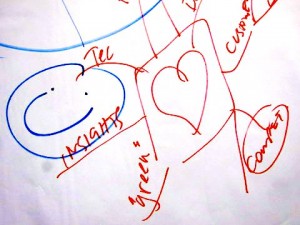 The future of leadership is about cooperation and collaboration rather than competition, dialogue rather than monologue and giving incentives rather than punishment.
The future of leadership is about cooperation and collaboration rather than competition, dialogue rather than monologue and giving incentives rather than punishment.
The border between work and life vanishes, the goal is to introduce life into the workplace and make it more real. A study shows that most employees use only 10 % of their brain capacity the time they enter the office – a pity, isn’t it? And a huge unused potential! The aim of leaders should be to make their employees to love their company and to be eager to go to work every day. This is obviously not a simple task but will definitely be worth it. It can be reached through the alignment of individual and company values. The leaders have to walk their talk and create the environment. This could for example be the increased possibilities to make friendships, as they have an important impact on job satisfaction (Forbes 2010).
One successful example is Google who gives its employees 20 % of their working time to devote to their personal projects. This has an enormous potential and generated Google Mail. Obviously this «free» time has to be communicated and managed in a proper way so it will not become a long weekend. Your employees have a huge potential which can and should be used for this win-win situation!
How serious is Apple about CSR?
“Apple is committed to the highest standards of social responsibility across our worldwide supply chain. We insist that all of our suppliers provide safe working conditions, treat workers with dignity and respect, and use environmentally responsible manufacturing processes. Our actions — from thorough site audits to industry-leading training programs — demonstrate this commitment.”
This is what Apple states on its website. This commitment might be true or not, but there is evidence that there is still a huge gap between this statement and the execution. The most famous example is the investigation at Foxconn, a big supplier of Apple, where the Fair Labor Association “found excessive overtime and problems with overtime compensation; several health and safety risks; and crucial communication gaps that have led to a widespread sense of unsafe working conditions among workers.” Additionally Apple claims that they go beyond the industry standard in their manufacturing process – this might seem to be great, but if one knows how the standards are now with low wages and plenty of working hours this is not enough.
Looking on the environmental side, Apple seems to be very transparent about its commitment to reduce the environmental impact of its products. This ranges from the non-use of hazardous materials to the calculation of the carbon footprint and less packaging. Additionally it aims to design its products to be as energy efficient and recyclable as possible. This has benefits for the environment and for the company and Apple should be acknowledged for this effort. These actions towards a greener company are well recognized amongst the customers, as stated in a survey by TDG in 2008, where 1512 internet users rate Apple as the most environmentally friendly technology brand. In contrast Greenpeace rated Apple 11th out of 17 rated companies in its Guide to Greener Electronics 2009. This created a gap between the perceptions of the customers and the reality. This gap is quite dangerous, because in case the perception of the customers is revealed to be untrue this would cause a huge damage on Apples reputation. The company already works hard to close the gap and went up five places in the Guide to Greener Electronics of Greenpeace from the ninth to the fourth place in 2011.
Still, after some research, Apples CSR activities seem to be more reactive than proactive and especially in the environmental sector due to pressure of environmental groups. According to some resources Apple lacks behind the CSR activities of its competitors, this is most probably because of the former CEO Steve Jobs, who valued the best technology for people more than random donations to charities (Chun 2011). Random donations to charities which Jobs did not like are not CSR for me neither, CSR is not how much money a company gives to the community, CSR is HOW a company makes business. And here is room for improvement.
The current situation of Apple is the chance of CEO Tim Cook to develop and introduce a proper CSR strategy. The strategy needs an innovative and inspiring vision which is aligned with the core values of the company and serves the cool image the company worked hard on. It needs to promote trust and openness internally and implement a continuous stakeholder dialogue to ensure the survival of the brand. Nobody wants to own products which are related with inhuman working conditions. Apple is highly innovative and should use its skills for social innovation. They have the potential to come up with innovative solutions for global challenges. Apple should not miss the possibility to become an innovator in CSR activities and to set a new standard in the technology sector with a cool sustainability vision. It’s time for a green Apple!
Resources, last accessed 07.05.2012:
Apple (2012) Supplier Responsibility at Apple, http://www.apple.com/supplierresponsibility/
Apple (2012) The story behind Apple’s environmental footprint, http://www.apple.com/environment/
Chun R (2011) Corporate Social Responsibility at Apple, http://www.imd.org/research/challenges/TC061-11.cfm
Fair Labor Association (2012) Complaints and Investigations, http://www.fairlabor.org/report/foxconn-investigation-report
Greenpeace (2011) Guide to Greener Electronics, http://www.greenpeace.org/international/en/campaigns/climate-change/cool-it/Campaign-analysis/Guide-to-Greener-Electronics/
Second week in Portland, OR #Sustainability
The second week of our study trip to Portland, OR went quickly and we are safe back in Madrid. We had the chance to visit Sokol Blosser – a certified organic winery. What I found quite interesting, is that they prefer soils for the grapevine that makes them struggle. The plant should go deep with its roots, and because of the challenge it will generate better grapes. This could be seen as a metaphor for situations in life – the more you get challenged the better you become. Sokol Blosser had the motivation to do the right thing from the beginning on. It is impressive to hear what efforts they do: starting with the organic cultivation of the fields to the most sustainable printer they could find in their office. This shows one of the difficulties businesses have to face if they start with responsible actions: where does the responsibility of a company start and where does it stop? Not easy to answer, each business has to find this out by itself and find the right balance.
Our trip brought us also to the Northwest National Marine Renewable Energy Center (NNMREC) which researches in wave energy, a challenging energy with potential. Wave energy machines are huge and the center has to test them in small scale. This scaling can be applied to any other sustainability measures in companies – successfully tested pilot projects can be scaled up and implemented in other facilities.
One of the trip highlights was the visit to the HQ of Nike (& nikebetterworld.com) where we got a whole program with different presentations plus a campus tour. My impression is that Nike takes the sustainability issue very serious. They implemented a sustainable growth strategy into all its business units, because they know that they depend on natural resources and its availability. The resource scarcity has a direct impact on Nikes bottom line. In order to have a market for its products made of recycled material Nike wants to transform the market and make the consumer conscious about environmental and social issues. Additionally they believe in a sector approach and stakeholder involvement to maximize impact. What we need is to make sustainability sexy and attractive!
“Sustainability means a healthy body in a healthy community in a healthy planet” Nike
The main ideas I took with me to Madrid are:
- Question basic assumptions – why do we do what we do and why do we do it how we do it?
- Think innovative & creative – there is not one solution to climate change, but many innovative and creative ones. Think out of the box! A door must not be used as a door again.
- For a real change we need collaborative sector action. This could look like the Eco Index for the outdoor industry.
- Partnerships & Dialogues are essential and relationships matter.
- First create pilot projects, if the idea works scale them up!
- As Nike is doing it, it is important to transform the market and create consumer awareness. This increases the attractiveness of sustainability for other companies as well and they will join.
I had a really good time in Portland, OR and want to give my thanks to Howard Feldman who organized all our visits and lectures! Thank you!
First week in Portland, OR #Sustainability
After 15 hours of travel we landed safe in Portland, OR with quite a jet lag – the day had just +9 hours. On Sunday we had time to explore the city. Honestly I didn’t really liked first. It was cold, rainy, nobody on the street, everything closed. And why it should be the greenest city in the US? I don’t know what I expected, but this city was everything else than green for me. Luckily I know it better now and each day I liked it more – with all its cosy restaurants, organic food and great products it offers. Sometimes it just needs some more time and good food 🙂
Monday was the first time we met Howard, our coordinator from Portland University and started with our 2-weeks program. During the first week we visited Columbia Sportswear, Portland Purple Water and had a delicious sustainable pizza at Hot Lips Pizza in the Ecotrust building. On campus we had the pleasure to enjoy oral presentations from Bonneville Environmental Foundation, New Buildings Institute, Natural Step and Portland General Electric about the institutions and its sustainable visions. It is very interesting for me to get to know insights into sustainable businesses practice – how to actually break down this impalpable word into manageable goals and to see different approaches.
What really kept me busy during this week was the question we raised in one class on sustainability about the motivation of companies to decide to be «green». Some are changing and see an competitive advantage in it. I would call this sustainable businesses rather “responsible”, because they take responsibility for the impacts their business activities causes. But why are there still many businesses which do not move? Is it lack of awareness, lack of knowledge or the investments they expect to make? What else do they need to take responsibility and create an action plan to change business practice?
The necessity to move is there and I can see the direct link between the environment, the businesses and the society. Briefly the agriculture depends on a functioning nature and most industries are based or dependent on agriculture. And the industry produces goods to satisfy the needs of the consumers. Hence, if businesses don’t care about the environment and social sustainability they can be threatened from both sides. My conclusion is that taking environmental and social considerations into account is simply risk management! Let me find out more about it the coming week!
Clean Development Mechanism project in Vietnam #Climate Change
You don’t know yet what is a Clean Development Mechanism (CDM)? Watch this video (2:33 min) first!
[youtube]http://www.youtube.com/watch?v=YzLy7h1WMjE[/youtube]
The CDM helps developed countries to reduce emissions and comply with the Kyoto protocol targets and supports developing countries to undertake investments for sustainable development and emission reduction.
The parties involved in the CDM project I want to share with you are Vietnam as host party with Dai Viet Company Limited and Investment and Trade Consultancy Company Limited; and Germany with RWE Power AG as Certified Emission Reductions (CER) buyer. The following picture indicates its location, which is around 20 km away from Buon Ma Thuot City in Vietnam.
The “Project 4291: Methane Recovery and Utilization Project of Dai Viet Co. Ltd, Vietnam” is a Greenfield project which treats industrial wastewater of Industrial Alcohol processing factory. This factory generates about 2,250 m3/day of wastewater while using cassava to produce 150,000 liters of alcohol. It requires heat from an on-site boiler for the production process.
The CDM project suggests to implement an anaerobic digester treatment system to capture biogas which can be used to heat the boilers in the production process. Furthermore it wants to prevent the release of methane (CH4) into the atmosphere from wastewater treatment. It therefore reduces GHG emissions by capturing the methane and the substitution of the coal as a fuel for the boilers. Here you can see a flow chart with the project boundary:
The baseline scenario: Without the CDM project the wastewater would be kept in open ponds and the methane (CH4) would emit straight into the atmosphere. Additionally the factory would use coal to generate heat to run the boilers. The chance that the project activity would be implemented without the CDM investment is very unlikely, because the proposed technology needs a high initial investment compared with other technologies.
The CDM project will contribute to environmental sustainability by:
- Reducing the emissions of methane and replacing coal by biogas, hence reducing the impact on global warming,
- contributing to a better water quality, and
- reducing bad smells from open ponds.
Additionally the project introduces a new technology in wastewater treatment and plans to build human capacity through training. The estimated reduction will be 119,309 tCO2e GHG emissions annually and the CDM displaces about 11,478 tons of coal.
From the viewpoint of the vulnerability to future climate change this small-scale CDM project has a small positive impact on the climate resilience of Vietnam. The project leads to better water quality in the surrounding areas and hence contributes to food security due to clean water for irrigation. The impact on the human capital is not very high, because this project needs well grounded staff and the number of planned trainings remains unknown.
The German company RWE Power AG has a high knowledge of CDM projects and is very interested to obtain the CERs in order to fulfill the obligation to reduce greenhouse gases. They state, that the investments into CDM projects are “key components of our climate change strategy”.
Resources, last accessed 19.02.2012:
CDM – Executive Board (2006) CLEAN DEVELOPMENT MECHANISM PROJECT DESIGN DOCUMENT FORM (CDM-PDD) Version 03 – in effect as of: 28 July 2006, http://cdm.unfccc.int/filestorage/V/2/Y/V2Y9OTHRUZ4KNQJ1G3CXA0W56EDI7M/4291%20PDD.pdf?t=TmZ8bHpucDZyfDBafcqM3KgVDn3alTKUNPcB
Overview of all documents: United Nations Framework Convention on Climate Change (UNFCCC) Project 4291: Methane Recovery and Utilization Project of Dai Viet Co. Ltd, Vietnam, http://cdm.unfccc.int/Projects/DB/RWTUV1293110791.88/view
How to stop population growth #Rural Development
 What kept me busy since we started with our Rural Development class was the video we watched about how to stop population growth with Hans Rosling. He stated that the only solution to stop population growth is to increase child survival. Is it really as simple as it sounds? What else can be done to stop population growth?
What kept me busy since we started with our Rural Development class was the video we watched about how to stop population growth with Hans Rosling. He stated that the only solution to stop population growth is to increase child survival. Is it really as simple as it sounds? What else can be done to stop population growth?
Population growth is defined as the “change in the size of a population – which can be either positive or negative – over time, depending on the balance of births and deaths” (Encyclopedia 2002). This is the global view and immigrations or emigrations don’t matter. Right now there are 7,022,236,217 people (Worldometers 2012) living on our planet and the distance between the poorest and the richest is greater than ever (Rosling 2010). The number is continuously growing to estimated 9.1 billion people in 2050 (United Nations 2010), the growth will mainly take place in developing countries.
Population growth is a huge problem because we have limited resources on our planet and more and more people cause environmental and health problems, like deforestation for food production, overcrowded cities and expansion of diseases (Vaux). Additionally population growth puts an enormous pressure on the food system, which has not only to produce more, but more in a sustainable way without the overexploitation of natural resources. The FAO (2009) estimates that the food production has to increase by 70% to be able to feed the “larger, more urban and richer population” in 2050.
So how to stop population growth? The measures can be divided into three sections – Education, Birth Control and Government Incentives (Vaux) – all accompanied by an increase of child survival.
«When you educate a woman, you educate a nation,» says Kalunde from Tanzania (Carrington 2011)
Education is crucial in reducing population growth. Women who know about family planning and how to care for their babies will have fewer children and a better quality of life. Additionally women need to be empowered and get access to education and healthcare (Oxfam 2011, 14).
Birth Control describes the possibility to prevent fertilization through several techniques, e.g. condoms or birth control pill. Hence birth control can prevent unwanted pregnancies and increase the self determination of women.
The Government can give Incentives, like tax breaks, to keep the family size low. These incentives can be accompanied by education projects to raise awareness about the costs of big families.
It doesn’t matter which way a government chooses to reduce population growth, one thing should be considered always: increase of child survival. Hans Rosling mentioned, that an increase of the life expectancy of children will result in a lower population growth, because woman can be sure that their children survive and count on quality rather than quantity. This is directly related to the fourth Millennium Development Goal, which aims to “Reduce child mortality” (UNDP 2012). You can watch here the Millennium News from Kenya on the fourth Millennium Development Goal (7:51 min):
[youtube]http://www.youtube.com/watch?v=LB_oERqQP6A&feature=related[/youtube]
“Almost nine million children still die each year before they reach their fifth birthday” (UNDP 2012) – the causes are mainly preventable.
Life expectancy (“average life span of a newborn”, Rosenberg 2010) can serve as an indicator on how healthy a country is. It will decrease if there are famine, war or diseases prevalent in a country and it can increase due to enhancements in health and hygiene. This already gives the starting point for the roadmap on how to increase child survival: Through improved hygienic condition, safe access to food and education and political stability. The main challenge will be to create the need for the governments to act and to overcome the unequal power relations.
I personally think that the strategy to stop population growth is a mixture of all measures described above and it must be adjusted to regional conditions. Child survival might be the key, but cannot remain the only action. We need education on family planning, at the same time techniques for birth control and enhancements in health and hygiene. We need to ensure a sustainable social and ecological development, equal opportunities and an increase of access to education.
Resources, last accessed 15.02.2012:
Carrington D (2011) Why women’s education in Tanzania is critical for slowing population growth, http://www.guardian.co.uk/global-development/2011/oct/24/women-education-tanzania-population
Encyclopedia (2002) Population Growth, http://www.encyclopedia.com/topic/Population_growth.aspx
FAO (2009) How to Feed the World in 2050, http://www.fao.org/fileadmin/templates/wsfs/docs/expert_paper/How_to_Feed_the_World_in_2050.pdf
Oxfam (2011) Growing a Better Future, Food justice in a resource-constrained world, http://www.oxfam.org/sites/www.oxfam.org/files/growing-a-better-future-010611-en.pdf
Rosenberg M (2010) Life Expectancy, http://geography.about.com/od/populationgeography/a/lifeexpectancy.htm
Rosling H (2010) Hans Rosling on global population growth, http://www.ted.com/talks/hans_rosling_on_global_population_growth.html
UNDP (2012) Millennium Development Goal 4, Where do we stand?, http://www.beta.undp.org/content/undp/en/home/mdgoverview/mdg_goals/mdg4/where_do_we_stand.html
United Nations (2010) World Urbanization Prospects: The 2009 Revision Population Database, http://esa.un.org/wup2009/unup/index.asp?panel=1
Vaux R (without year) Ways to Stop Population Growth, http://www.ehow.com/way_5266375_ways-stop-population-growth.html
Worldometers (2012) Current World Population, 15.02.2012, 18:46, http://www.worldometers.info/world-population/
Why Companies have to open their doors and how to do it #Innovation
 Innovation and new ideas are crucial for survival in today markets for companies. Everything became connected and things change faster. Companies cannot purely rely on their own competencies but have to look outside for stimulations and new ideas. Ideas get better if they get shared and other can add their thoughts and develop them to something bigger than the sum of their parts (Johnson 2010). The internet gives us the possibility to share ideas like never before.
Innovation and new ideas are crucial for survival in today markets for companies. Everything became connected and things change faster. Companies cannot purely rely on their own competencies but have to look outside for stimulations and new ideas. Ideas get better if they get shared and other can add their thoughts and develop them to something bigger than the sum of their parts (Johnson 2010). The internet gives us the possibility to share ideas like never before.
In the last years two main streams of innovation research came up, one led by Eric von Hippel with the Lead User Innovation, which is the older concept, and the other one led by Henry Chesbrough called Open Innovation, which got discovered by companies how they can benefit from customer ideas. Schroll (2011) summarizes the main difference as follows:
“Open Innovation = value capture, User Innovation = value creation”
Open Innovation basically describes the combination of “internal and external ideas as well as internal and external paths to market to advance the development of new technologies” (Openinnovation.eu). The Lead User Innovation involves so called lead users (users that are ahead of the trend and try to find solutions, leaduser.com 2006) into the innovation process of companies. It could be seen as a tool for an outside-in-process of the Open Innovation (Wikipedia 2011), where companies make use of external ideas.
After the hype about Open Innovation – it will replace R&D! – it got more mature. Before it created uncountable ideas and “solutions that vary greatly in quality and relevance” (Bonner 2011). Now the question in the forums is how this will actually generate value. Research took a closer look at the role of users in innovation and came up with different explanations, but they could not come up with a coherent theory why users innovate (Bogers, Afuah, Bastian 2010)
A good example for open innovation and how a company is able to provide demanded goods is the platform “Tchibo ideas” (in German). Tchibo, originally selling coffee, is an international company now selling household products. To give consumers a voice and provide a platform for extraordinary ideas to share and develop, it founded the platform “Tchibo ideas” where people can post daily problems and find solutions together. All members can rate the ideas and vote for the problem and the solution of the month. Tchibo realizes some of the solutions and you can possibly find your own designed product at the point of sale!
Such a platform has to be managed in a good way, I can imagine that it could get very messy if there is no clear structure behind and a company wants to do it as a sideline. The company cannot expect that it will run by itself, manpower and commitment from the side of the company are needed. It would be wrong to lean back and wait for the groundbreaking innovation on the platform. Surely it has to give a roadmap to find qualitative solutions which could turn into profitable products. Open Innovation cannot replace R&D, but it can complement it.
Resources, last accessed 12.02.2012:
Bogers M, Afuah A, Bastian B (2010) Users as Innovators: A Review, Critique, and Future Research Directions, in: Journal of Management, Vol. 36 No. 4, July 2010, page 866, http://www.exnovate.org/gallery/documents/published-papers/bogers-afuah-bastian-2010-jom-users-as-innovators1.pdf
Bonner M R J (2011) The New—And More Profitable—Way To Look At Open Innovation, http://www.businessinsider.com/the-newand-more-profitableway-to-look-at-open-innovation-2011-7
Johnson S (2010) Where good ideas come from, http://www.youtube.com/watch?v=NugRZGDbPFU
leaduser.com (2006) What is a lead user?, http://www.leaduser.com/
Openinnovation.eu (without year) What is Open Innovation?, http://www.openinnovation.eu/open-innovation/
Schroll A (2011) About the dispute between Open and User Innovation, http://www.open-innovation.net/blog/79-about-the-dispute-between-open-and-user-innovation.html
Tchibo (2012) About Tchibo, http://www.tchibo.com/content/312682/-/en.html;jsessionid=7541CDB0E4ADDD767FDA96BF81CB5B2D
Tchibo (2012) Tchibo ideas, https://www.tchibo-ideas.de/
Wikipedia (2011) Open Innovation, http://de.wikipedia.org/wiki/Open_Innovation


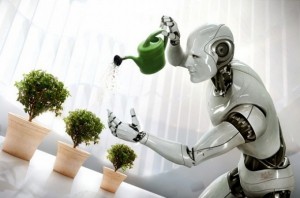

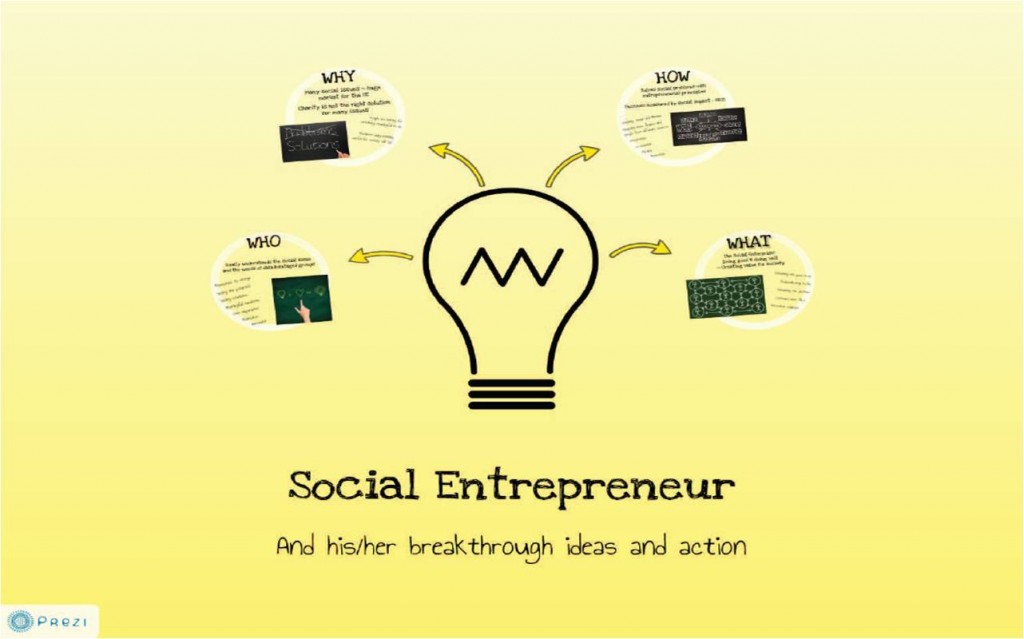
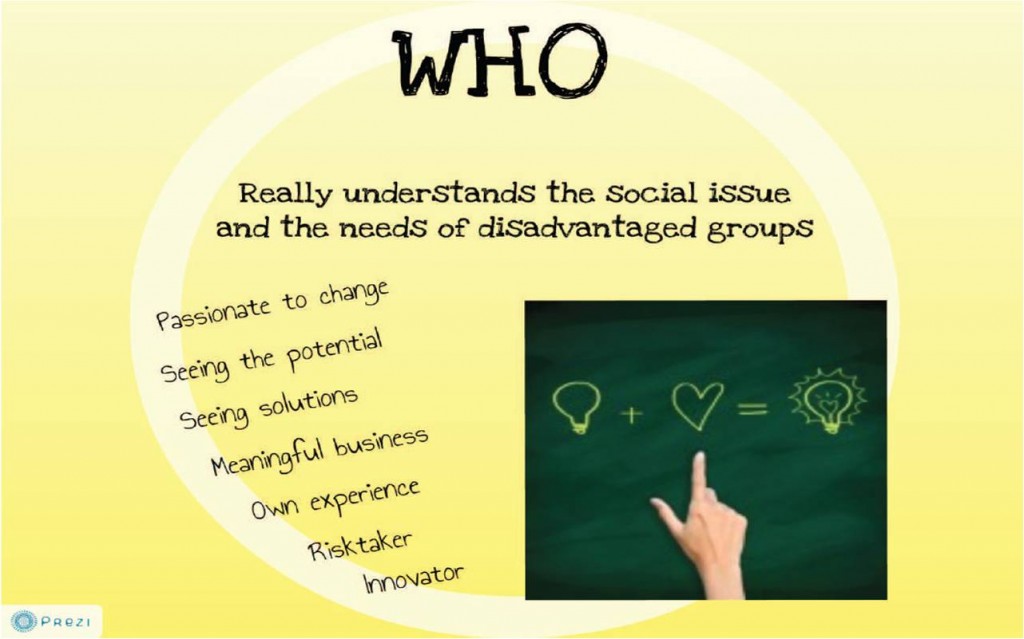
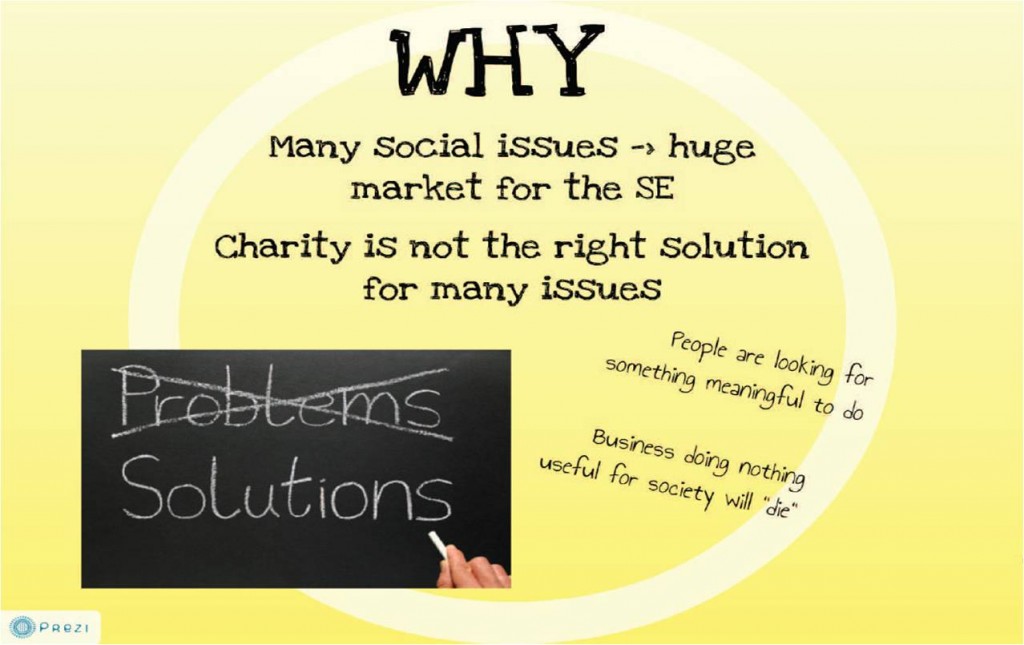
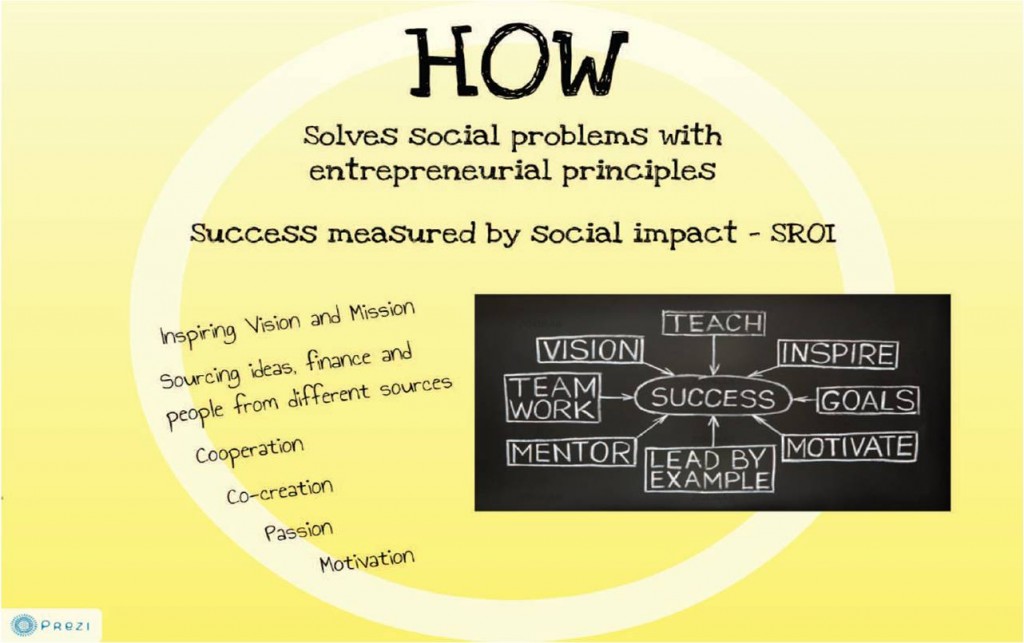
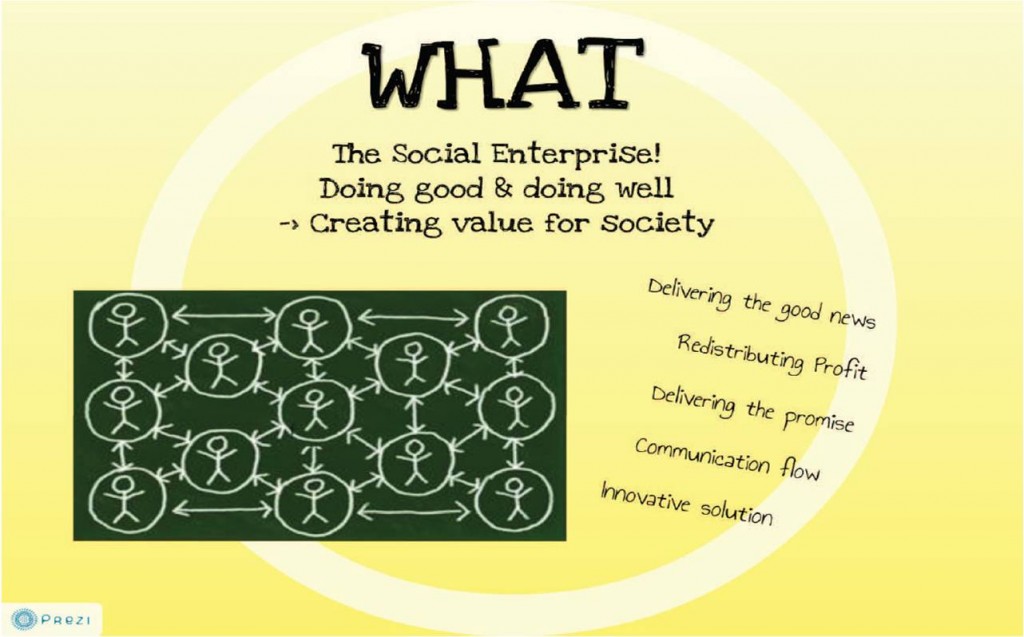

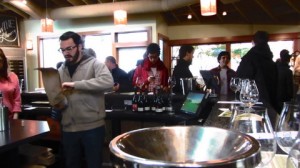
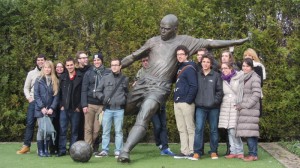
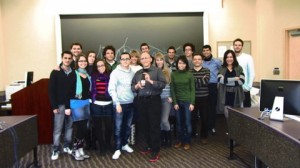
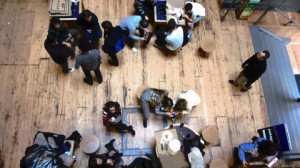
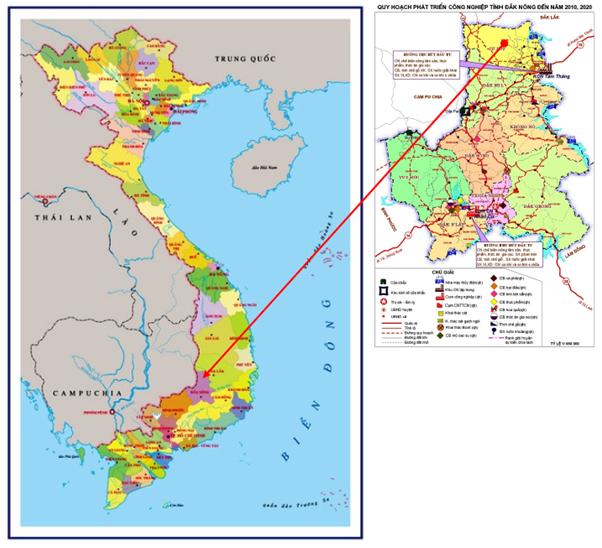
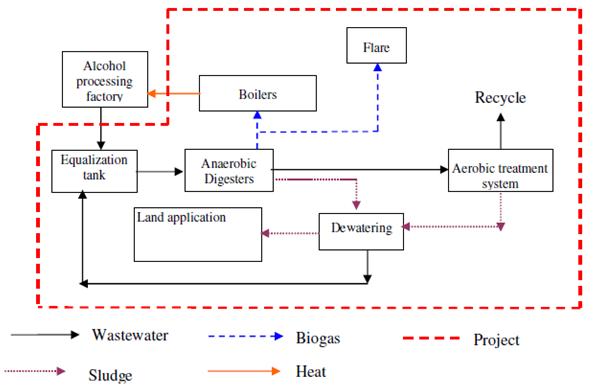
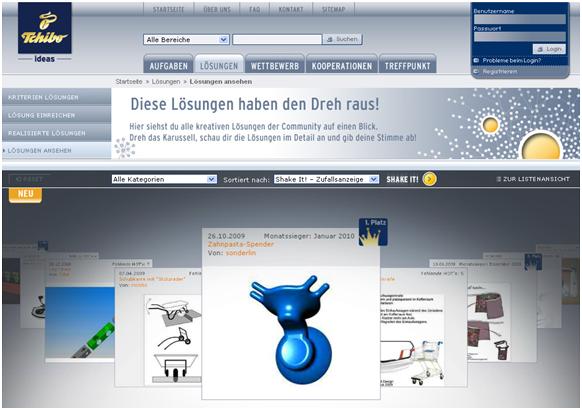
.png)
].gif)
.png)
].png)
].png)
].png)
.png)
].png)
.png)
